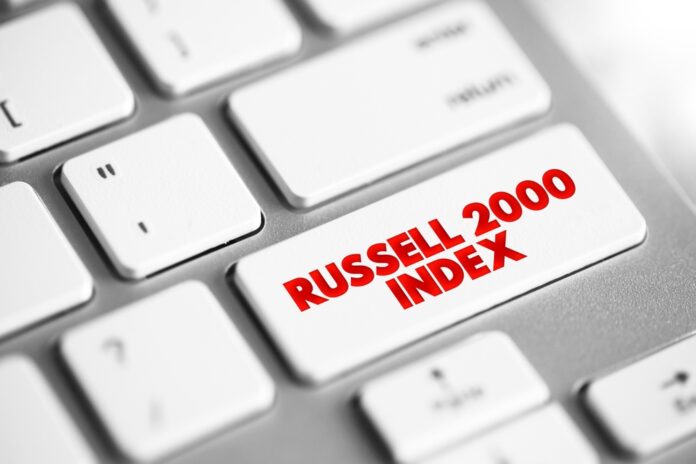The Russell 2000 is a U.S. index that tracks the performance of 2,000 companies with the smallest market capitalizations in the Russell 3000, serving as an indicator to estimate the state of the U.S. economy. In this article, we will explain how it works, which companies are part of it, and much more.
In the world of trading, there are a wide variety of indices. Some include large companies, such as the IBEX 35, which tracks the most important companies in Spain, or the Dow Jones, which includes the 30 most significant companies listed on the New York Stock Exchange (NYSE). However, others focus on smaller companies, like the Russell 2000, a U.S. index that tracks the performance of the 2,000 companies with the smallest market capitalizations in the Russell 3000.
What is the Russell 2000?
The Russell 2000 is a U.S. stock market index that is part of the larger Russell 3000, which includes about 95% of the stocks in the U.S. market. This index was created by Frank Russell Company in 1984 and is currently managed by FTSE Russell. It focuses on 2,000 companies with smaller market capitalizations than the Russell 3000 and helps analyze the performance of smaller U.S. companies. Many investors pay attention to this index to gauge the economic situation of the country, as these smaller companies tend to rely more heavily on the U.S. economy, unlike larger companies with international operations.
Although both the Russell 2000 and Russell 3000 overlap in about 66% of their companies, the Russell 2000 represents approximately 8% of the Russell 3000’s total market capitalization due to the large influence of major technology companies in the latter. Among the sectors included in the Russell 2000, the most relevant are industrials, healthcare, financials, and technology.
How Does the Russell 2000 Work?
Similar to other major indices like the Nasdaq or the S&P 500, the Russell 2000 is a capitalization-weighted index. This means that not all companies have the same influence. The higher a company’s market capitalization, the greater its weight and impact within the index, and vice versa.
How is the Composition of the Russell 2000 Determined?
The Russell 2000 is determined by market capitalization, meaning that companies with larger capitalizations have more weight. The index consists of 2,000 companies from various sectors and is updated periodically to reflect changes in the U.S. market.
Unlike other major indices like the Dow Jones or Nasdaq 100, whose compositions are determined by committees, the Russell 2000’s composition is based purely on market capitalization within the Russell 3000, focusing on the 2,000 smallest companies. To be part of the Russell 2000, companies must meet several criteria:
Location: The company must be headquartered in the United States.
Market Capitalization: The company must be among the 2,000 smallest companies by market capitalization in the Russell 3000.
Liquidity: The company’s stock must have sufficient liquidity, meaning it should have a certain amount of daily investment turnover.
Stocks: The company must have common stocks available to the public and a minimum free float of 5%.
What Companies are Included in the Russell 2000?
The Russell 2000 is a highly diversified index composed of 2,000 companies with the smallest market capitalizations in the Russell 3000. These companies belong to sectors such as:
- Energy
- Financials
- Healthcare
- Consumer Discretionary
- Technology
- Industrial
- Real Estate
- Basic Materials
- Consumer Staples
- Public Sector
The industrials, financials, and healthcare sectors have the greatest weight in the index. Some notable companies in the Russell 2000 include Super Micro Computer, Comfort Systems USA, and Abercrombie & Fitch. When investing in this index, it’s important to remember that, since it includes smaller companies, they may benefit more when the government lowers taxes related to income.
What is the Timetable for Investing in the Russell 2000?
Like most U.S. indices, the Russell 2000 is open Monday through Friday from 9:30 a.m. to 4:00 p.m. New York time. However, investors should be mindful of U.S. holidays, as the index will be closed on those days. These holidays include:
- New Year’s Day
- Martin Luther King Jr. Day
- President’s Day
- Good Friday
- Memorial Day
- Independence Day
- Labor Day
- Thanksgiving Day
- Christmas
How to Invest in the Russell 2000?
The Russell 2000 is an attractive index for investors, but it is important to remember that it is subject to volatility. This means that the index can be influenced by overall market movements as well as fluctuations in the companies that compose it. Therefore, before making any investments, investors should clarify their objectives and assess the level of risk they are willing to take.
There are several ways to invest in the Russell 2000, including:
Stocks: One option is to invest directly in the stocks of companies that make up the index, such as MicroStrategy, Carvana, or GEO Group.
ETFs: Another way to gain exposure to the entire Russell 2000 is by investing in ETFs that replicate the performance of the index. This allows for indirect investment, reducing risk but also potentially lowering returns.
Investing in the Russell 2000 with OnEquity
OnEquity allows you to invest in some of the world’s most traded stock indices, including the NASDAQ 100, DOW 30, DAX 40, FTSE 100, and EURO STOXX 50. The platform offers several advantages:
- Access to all major U.S., European, and Asian indices.
- Leverage of up to 1:1.
- Ultra-competitive spreads.
- No commissions.
Conclusion
Investing in the Russell 2000 index provides investors with a unique opportunity to explore the dynamic and potentially profitable world of U.S. small-cap companies. This index offers excellent investment opportunities and diversification, whether through ETFs or direct investment in its constituent companies.
Diversification, potential growth, and access to emerging companies make the Russell 2000 an attractive option for investors. However, it is crucial for investors to understand and assess the risks involved before making any decisions, taking into account their risk profile and financial goals.



